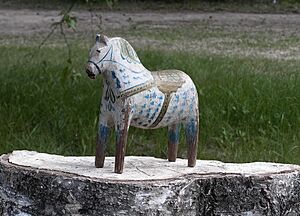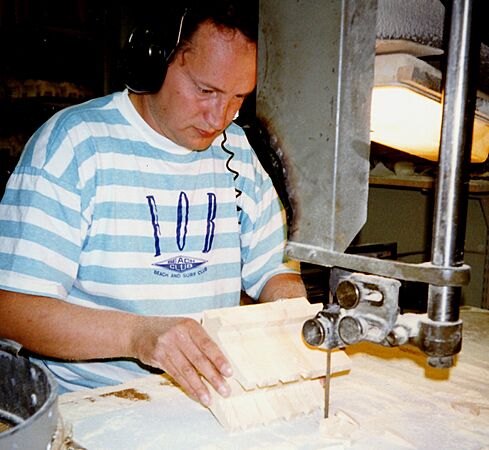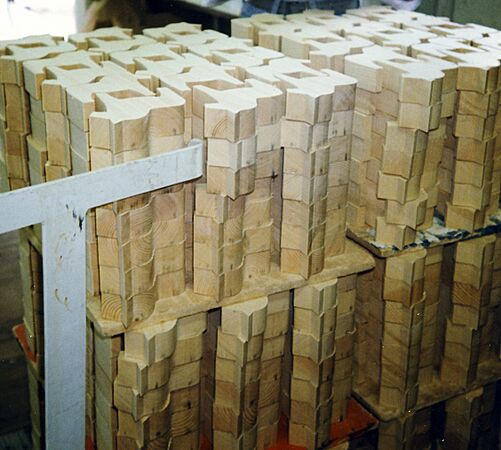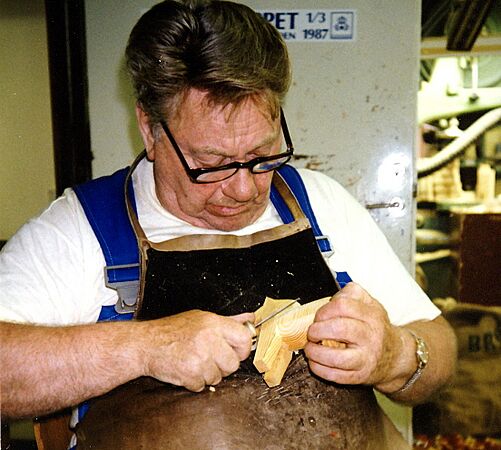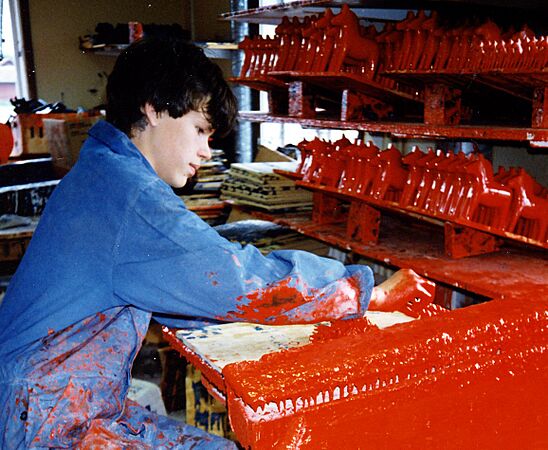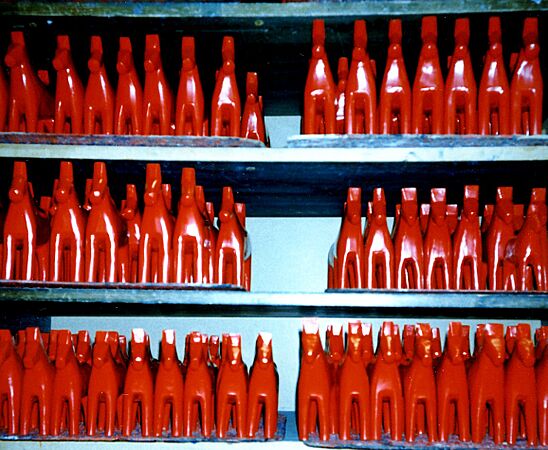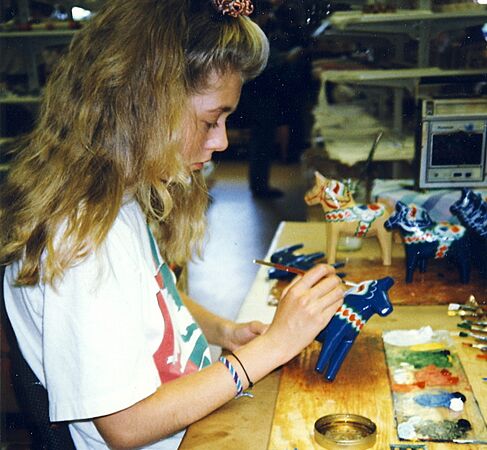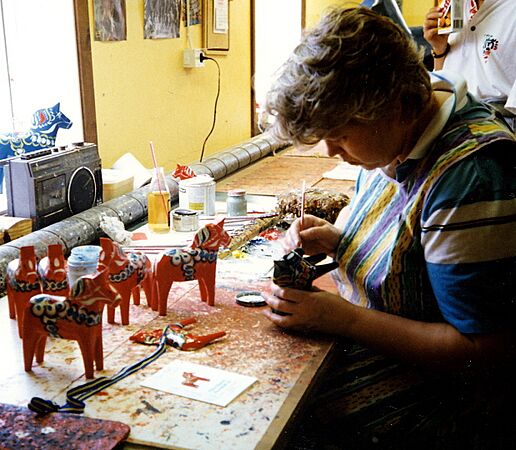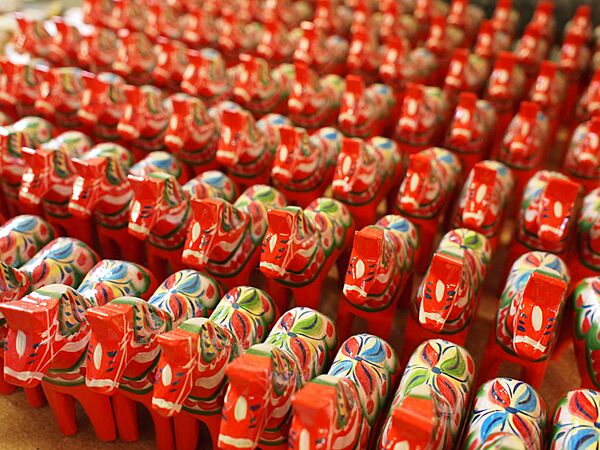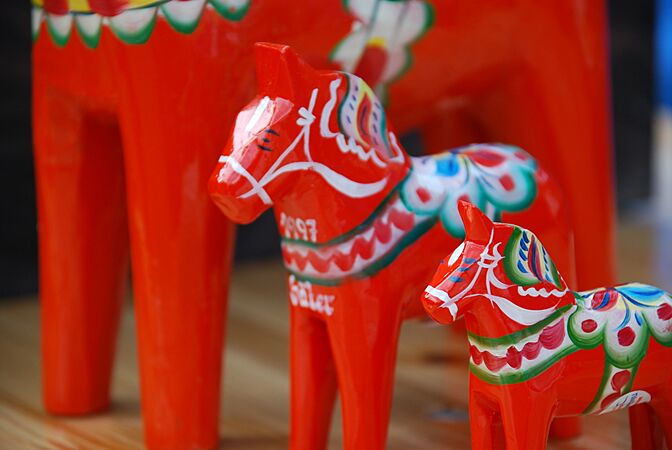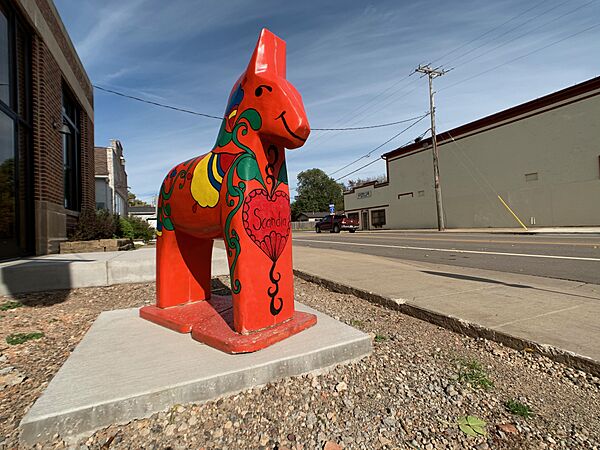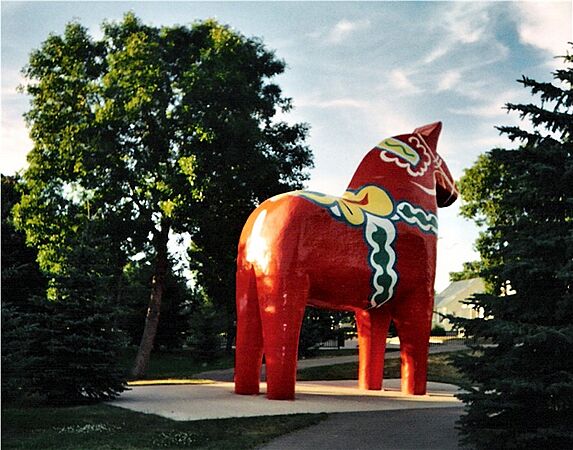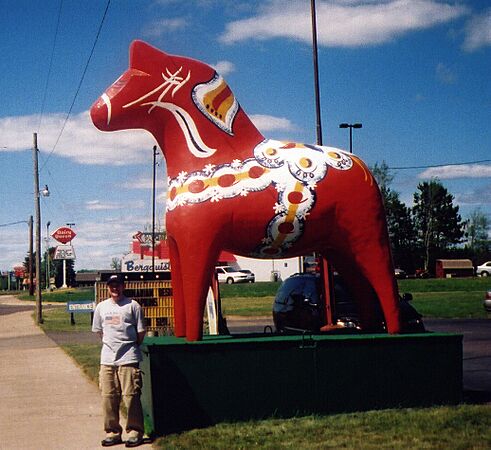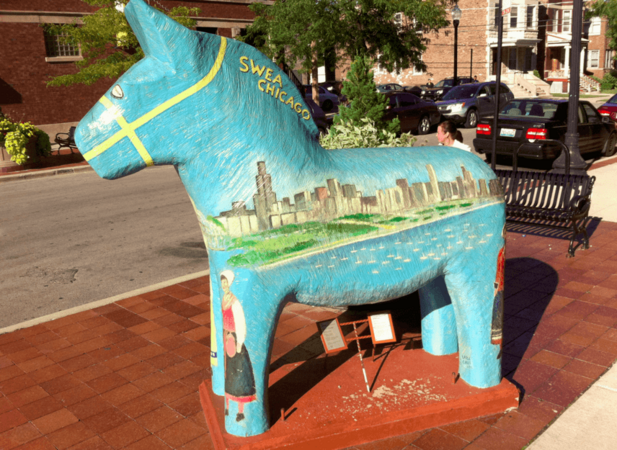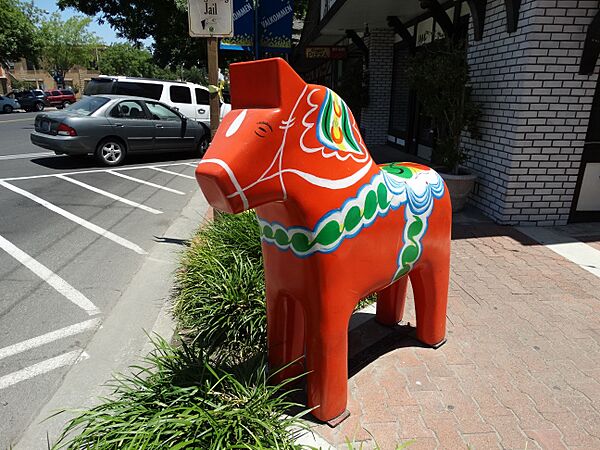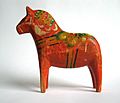Dalecarlian horse facts for kids
A Dalecarlian horse or Dala horse (Swedish: Dalahäst) is a special wooden horse statue from Sweden. It's carved and painted by hand. These horses come from a part of Sweden called Dalarna. Long ago, Dala horses were mostly toys for kids. Today, they are a famous symbol of Dalarna and of Sweden itself.
There are many kinds of Dala horses, each with unique features from where they are made. But one style is super popular: a sturdy horse painted bright red. It has cool details and a harness painted in white, green, yellow, and blue.
Contents
Where do Dala Horses come from?
The first Dala horses were made in four villages: Bergkarlås, Risa, Vattnäs, and Nusnäs. These villages are all in the area of Mora. It's thought that making these horses started in Bergkarlås. Then, the craft spread to nearby villages like Risa and Vattnäs.
Around the same time, people in Nusnäs also started making Dala horses. Because Nusnäs was a bit further away, their horses had a slightly different look. Each artist had their own special way of painting. People who remember the old days can often tell which village, or even which person, made a certain horse.
Many of the very first Dala horses don't exist anymore. But the ones that do are very special to their owners. They are often passed down through families. Collectors also love these old horses, and their value has grown a lot over time.
Today, many villages in Dalarna still make Dala horses. Each village has its own style. These horses also come in different shapes and sizes. For example, the Nusnäs horse is strong and stocky. The Rättvik horse is tall and elegant. You can see many of these horses at a yearly show. This show has been held since 2000 at Klockargården in Leksand, Sweden. About forty artists show and sell their Dala horses there.
How are Dala Horses Made?
Today, Nusnäs is the main place where Dala horses are made. The most famous workshops are Nils Olsson and Grannas Olsson. Grannas A. Olssons Hemslöjd AB, started in 1922, is the oldest company still making these horses. Nils Olssons Hemslöjd is almost as old. The horses from these workshops have the classic look most people know.
Some workshops also make special, limited edition horses. These look like the old horses found in museums or private collections. They are numbered and signed so no one confuses them with truly antique horses.
The wood for the horses comes from slow-growing pine trees around Lake Siljan. This wood is perfect for carving. Only the best trees are chosen while they are still in the forest. The trees are cut down and sawed into pieces. These pieces will become the basic shapes for the Dala horses.
The horse shapes are sawed and carved by hand. This means no two horses are exactly the same! After carving, the horses are dipped in a special paint called primer. This helps show any tiny flaws in the wood that need fixing. Then, any small holes are filled to make the surface super smooth. The horses are polished to give them a nice, smooth finish.
After polishing, the horses are dipped in their main color. The traditional patterns are painted by hand by skilled "ripple" painters. This special painting style takes many years to learn. Finally, all the beautiful horses are varnished. Then, they are sent out from Nusnäs to be a symbol of Sweden around the world.
Making Dala Horses Step-by-Step
Dala Horses in the United States
-
Dala horse in downtown Scandia, Minnesota
-
American replica in Mora, Minnesota
-
The Dalecarlian horse in Minot, North Dakota
-
Dala horse in Cloquet, Minnesota
-
Dalecarlian horse in Andersonville, Chicago
-
Dala Horse in Kingsburg, California
Dala horses first came to North America at the 1939 World's Fair in New York. Architects Sven Markelius and Anders Beckman chose the Dala horse. They wanted a strong symbol for the Swedish part of the fair.
You can see a similar Dala horse in Andersonville, Chicago. The Swedish American Women's Educational Association (SWEA) gave it to the Swedish American Museum. SWEA asked Swedish artist Lars Gillis to paint the horse. He painted it to show the connection between Sweden and Chicago.
After eight years, the original Dala horse couldn't handle the Chicago weather. It was taken down in 2013 for repairs. This took a year. Now, the original horse is safe inside the Swedish American Museum. A new fiberglass copy is outside on the corner of Clark and Farragut streets.
Images for kids
-
The wooden horses are painted in the kurbits style. This one is from around 1950.
See also
 In Spanish: Caballo de Dalecarlia para niños
In Spanish: Caballo de Dalecarlia para niños


